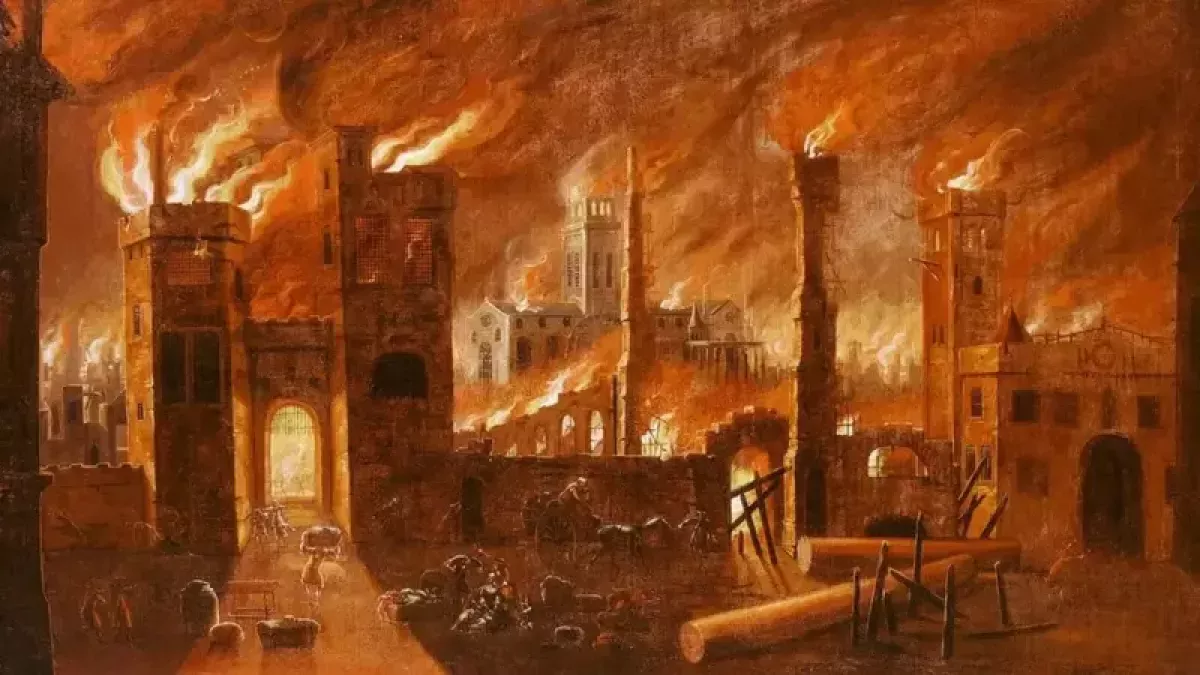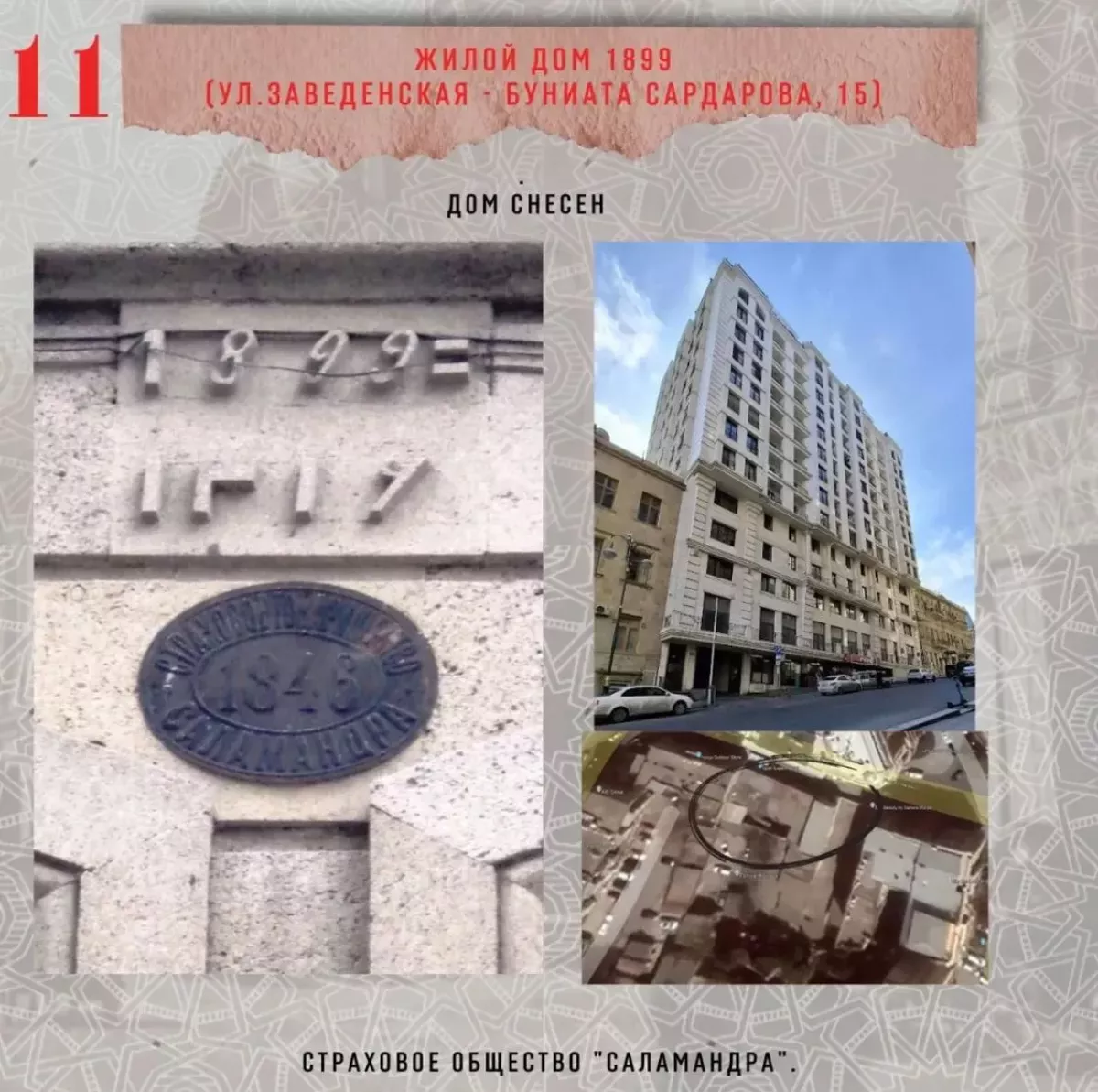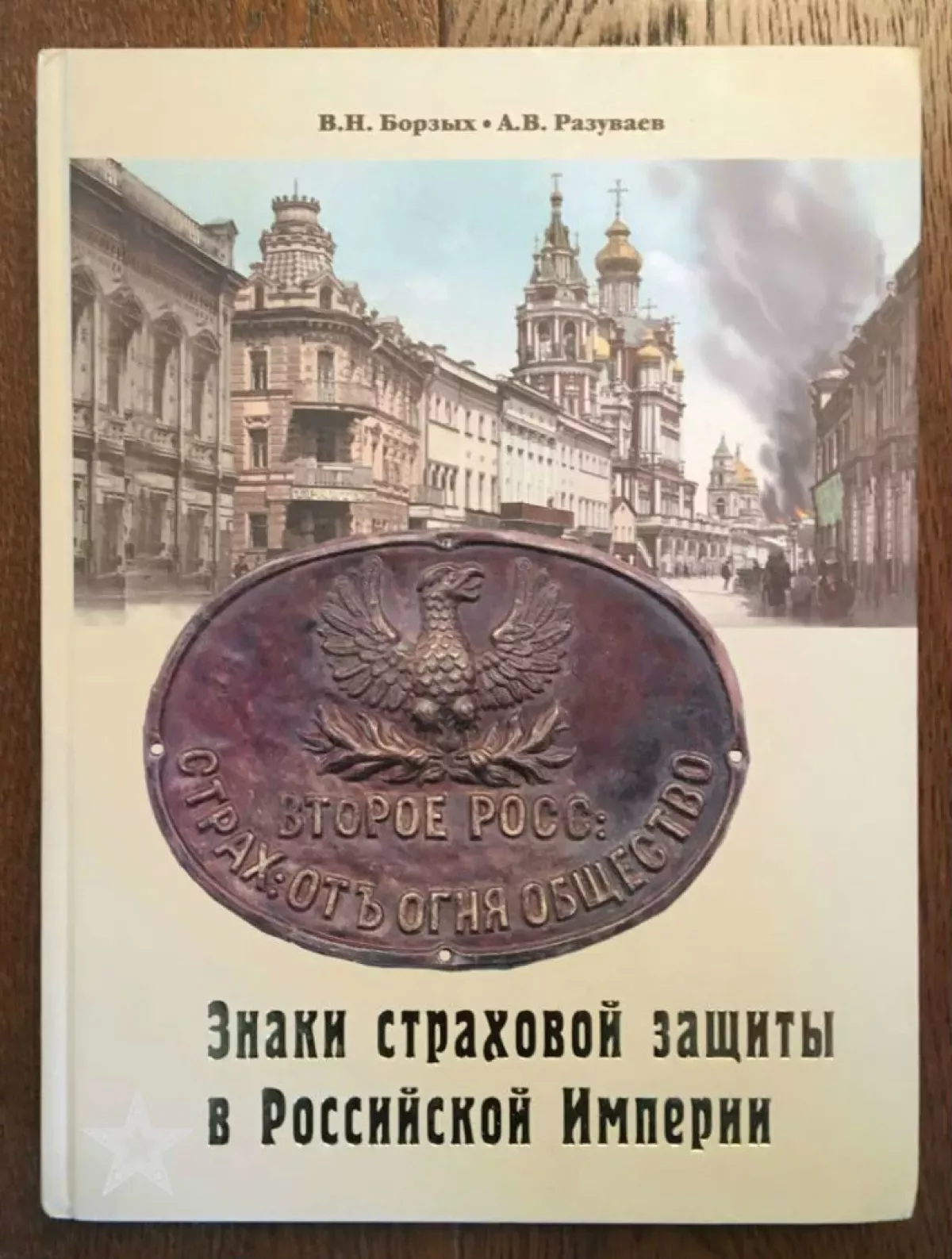Baku through tiny details: Fire insurance marks as elements of urban architecture Historical journey by Caliber.Az
Baku is a city with a rich history, where behind every façade lie fascinating stories and details. One such curious and almost forgotten chapter is that of insurance plaques.
An insurance plaque is a metal plate bearing the emblem or logo of an insurance company, which was affixed to the façade of an insured building or above the door of an apartment protected against fire. It was not merely a sign of affiliation with a particular insurance firm but also a symbol of prestige, highlighting the social status of the owner.

The origins of this tradition date back to the late 17th century. After the devastating Great Fire of London in 1666, which destroyed around 13,000 buildings in just five days, homeowners began establishing private fire insurance companies. At that time, municipal fire services did not yet exist, and each insurance company maintained its own fire brigade.
However, a problem arose: when fire brigades from different companies arrived at the scene, they would argue over who had the right to extinguish the fire, as each team was only interested in protecting the properties insured by their own company. Such disputes sometimes escalated into scuffles, while the house burned to the ground. The solution was the introduction of special identifying signs—insurance plaques. They clearly indicated whether a house was insured and with which company, helping to prevent delays and disputes.
Over time, insurance plaques became not only a functional element but also part of the city’s architectural landscape, preserving the memory of an era when firefighting was a private affair, and metal on a façade signaled both reliability and social status.
Insurance plaques primarily differ based on the insurance institutions they belonged to, which had various organizational structures. It is believed that the first such plaque in Imperial Russia appeared in 1827, although almost nothing is known about its appearance or fate.
More reliable information begins in 1835, when the “Second Russian Fire Insurance Society” started issuing metal plaques to its clients as a mark of insured property. Later, similar plaques were used by all joint-stock, municipal mutual, and zemstvo insurance institutions engaged in fire insurance.
An insurance plaque was a metal plate painted in two or three, and sometimes more, colors, displaying the name of the insurance society. Plaques of joint-stock companies often featured their corporate logos, while those of municipal mutual and zemstvo (provincial) insurance displayed images of city or provincial coats of arms.

The owner received such a plaque along with the fire insurance policy, with no separate fee charged for it. These plaques were not only a functional identification mark but also an element of architectural decoration, giving the building a unique character and reflecting its history.
In Baku, insurance plaques from various companies can still be found; however, particular interest is drawn to plaques from firms such as “Salamandra,” “Nadezhda,” “Yakor,” and “Rossiya.”

On the plaques of the fire society “Salamandra,” the symbol of fire insurance—a salamander—was depicted for more than five decades. According to ancient and medieval beliefs, this lizard-like mythical creature cannot be burned. Instead, the salamander lives in the element of fire and symbolises its spirit.
The plaques of the Russian insurance societies “Nadezhda” and “Yakor” also feature their corporate logos, which are based on an anchor—a traditional symbol of hope and salvation.
The emblem of the pre-revolutionary insurance society “Rossiya” carries particularly deep meaning. Its design centres on an eight-pointed star, formed by two overlapping quadrilaterals with concave sides. These elements are characteristic of the miraculous icon of the Mother of God, “Neopalimaya Kupina” (“The Unburnt Bush”), which for centuries was widely known in Russia as a protective talisman against fire.

In 2008, the book “Signs of Insurance Protection in the Russian Empire” was published, becoming the most comprehensive catalogue of Russian insurance plaques. This edition also includes companies that were active in Baku at the time.
Baku is a city of endless facets, each holding its own story. Here, eras and styles intertwine in whimsical ways, leaving traces of bygone times on the streets. Some of these are the majestic palaces of oil magnates, while others are modest yet meaningful details that are easy to overlook—carved doors, old signs, street lamps, wrought-iron grilles, and, of course, insurance plaques. Each of these carries a layer of the city’s cultural and economic memory. Insurance plaques are another small but significant element of our history, making Baku the city we love and know today.
This article also uses materials and photos by Stasiya Orlova-Stroganova.
Vahid Shukurov, exclusively for Caliber.Az








